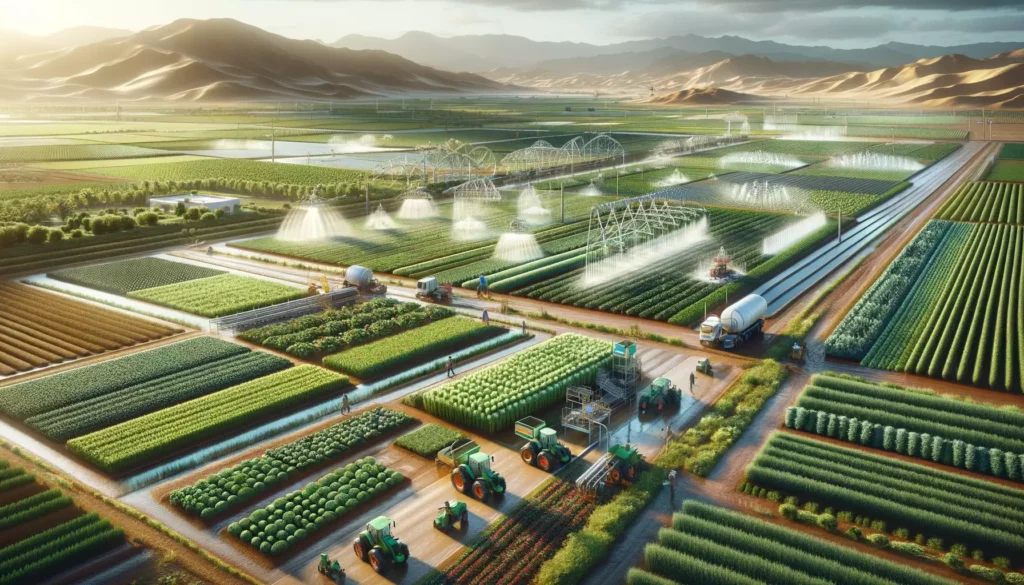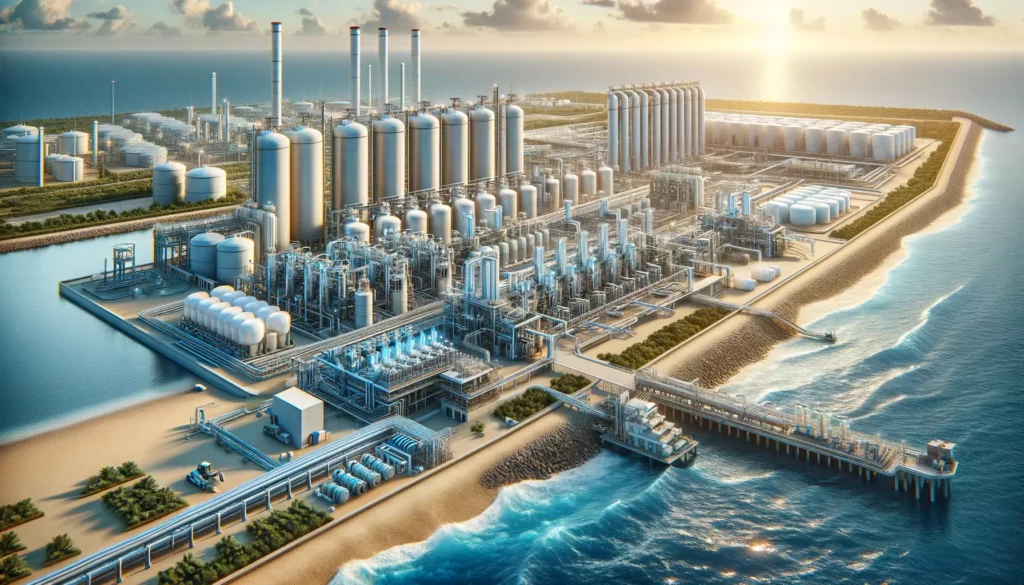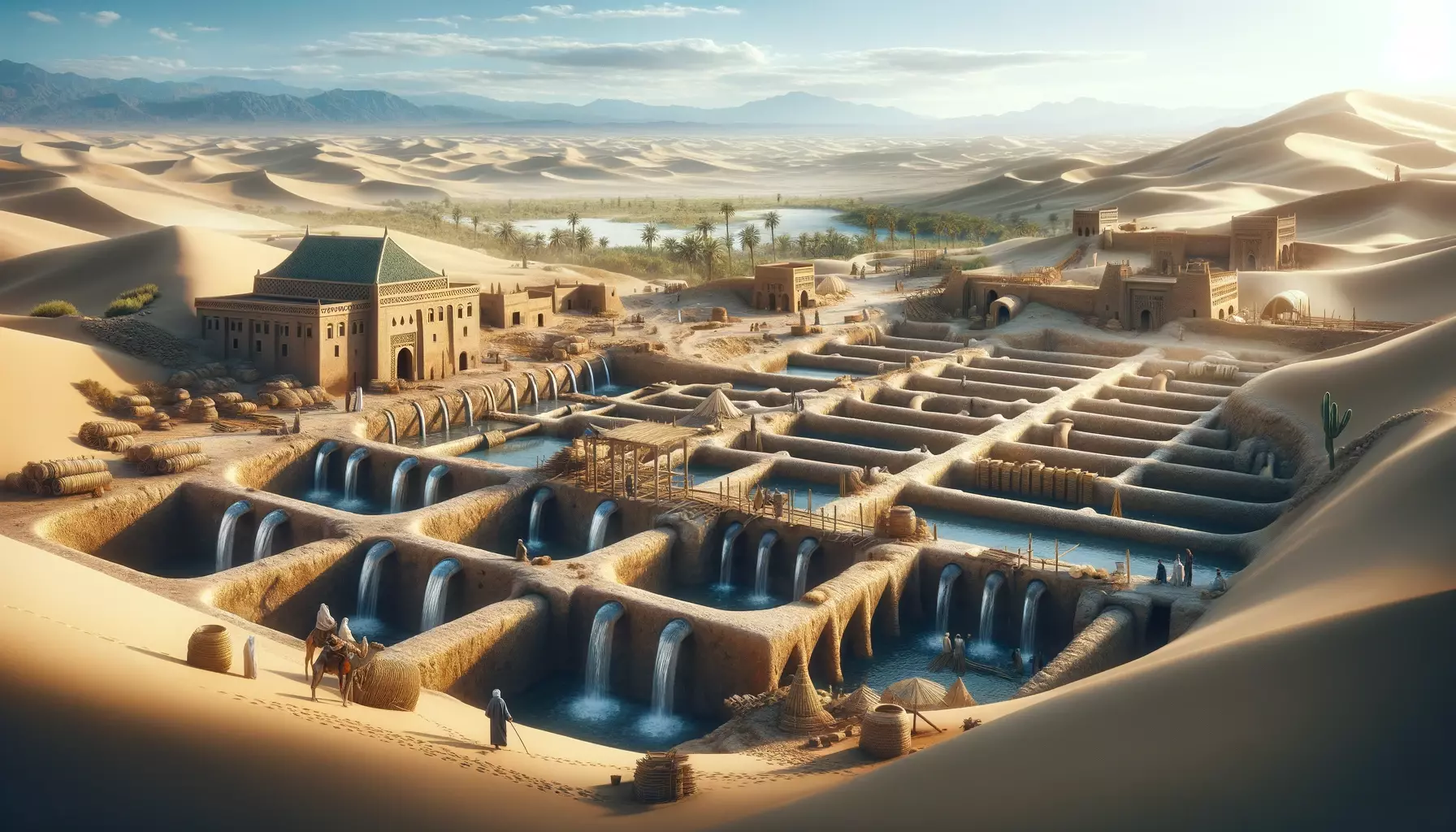Ancient Irrigation Techniques
Centuries ago, in the arid regions of Southeast Morocco, inhabitants developed a unique irrigation system known as “khettara.” This ancient method involved constructing a series of interconnected wells and underground tunnels, extending from water sources to agricultural fields. These tunnels were carefully angled to ensure water flow, despite the region’s frequent sandstorms. The entire khettara system was a communal effort, with each family contributing labor or funds for its construction, ensuring equitable water distribution among all participants. These traditional practices, relying on basic tools and human ingenuity, laid the foundation for Moroccan agriculture.
The Green Morocco Plan
In 2008, Morocco embarked on a transformative agricultural journey with the Green Morocco Plan. This strategy focused on intensifying production and investment, tailored to various agricultural sectors and regions. From 2008 to 2018, the plan catalyzed significant growth in investment, production, and value chains, substantially improving the living conditions of farmers. The Plan adopted a sector-based approach, fostering modernization and development in various agricultural sectors through partnerships and contractual frameworks with professional organizations. This initiative enhanced productivity, quality, and subsequently, the added value and income of farmers.

Social Equity in Agriculture
A key component of the Green Morocco Plan was its emphasis on social equity, particularly in rural areas. Small farmers gained access to financing, subsidies, and expert agricultural advice. Strategies like social aggregation and cooperative creation were employed to better integrate family agriculture into value chains and economic systems. By July 2019, 985 solidarity agriculture projects were initiated, benefiting around 733,000 people, surpassing the initial goals set for 2020.
High-Value Agriculture
To compete in the global market, Morocco invested in modernizing its agricultural sector. Public incentives stimulated private investment, leading to modernization and competitive agriculture. Projects like agricultural aggregation and Public-Private Partnerships (PPP) were key to this transformation. By 2020, the Green Morocco Plan aimed to mobilize 78 billion dirhams in investments across a thousand projects, benefitting over 437,000 individuals.
Transversal Reforms
Structural reforms were implemented across various domains under the Green Morocco Plan. These measures focused on improving the production environment, managing risks, ensuring resource preservation, promoting exports, and enhancing domestic marketing. Projects from 2008 to 2019 had significant impacts, marking a new era in Moroccan agriculture.
Morocco’s Agricultural Export Boom
Morocco has recently dominated headlines with its burgeoning fruit and vegetable exports. The country is poised to become a leading supplier of tomatoes to the EU, with 21,000 hectares of tomato greenhouses in the Souss Massa region alone. As of 2018, Morocco’s horticultural crop area spanned 250,000 hectares, yielding 7.5 million tons. The completion of the Green Morocco Plan that year elevated agriculture to around 30% of the GDP.
Advantages in Transportation and Water Resources
The investment in the Tanger-Med port has streamlined access to Northern European ports. Additionally, the high-speed central railway corridor via Algeciras enhances the export of Moroccan products. The Agadir desalination plant, inaugurated in January 2022, currently supplies approximately 275,000 m³/day, expected to increase to 400,000 m³/day, making it the largest in Africa. Moreover, a new desalination plant is planned in the Dakhla area (Western Sahara), boosting significant agricultural production. These developments are part of the “Generation Green 2020-2030” strategic plan for Moroccan agriculture.

Competitive Edge: Quotas and Labor
Morocco’s tomato exports have significantly impacted European producers due to increasing competition. The country’s low labor costs (approximately 10-12 Dirham/hour) give it a comparative advantage. Moroccan tomato exports are nearly identical to Spain’s total, with both the cultivated area and production consistently growing. Additionally, Morocco benefits from tariff-free tomato entry quotas into the EU from October 1 to May 31, plus an additional 28,000 tons in certain months, totaling about 285,000 tons annually.
Beyond Tomatoes
Morocco has become the second-largest supplier of watermelons to the EU, surpassing Italy. According to Icex-Eurostat data, in 2018, Spanish watermelon sales in the EU decreased by 22.98%, while Moroccan sales increased by 81.74%. Morocco’s exports of fresh strawberries in 2022 also broke records with 22,400 tons, a 17% increase from 2021. Additionally, Morocco is expanding its presence in the global market for frozen raspberries, now reaching Ukraine.
Conclusion
Morocco’s agricultural sector, rich in history and innovation, has undergone a dramatic transformation. From the ancient khettara system to the ambitious Green Morocco Plan, the country has strategically navigated the challenges of modern agriculture. With its focus on sustainable practices, technological advancements, and global market integration, Morocco continues to shape a dynamic and prosperous agricultural future.
